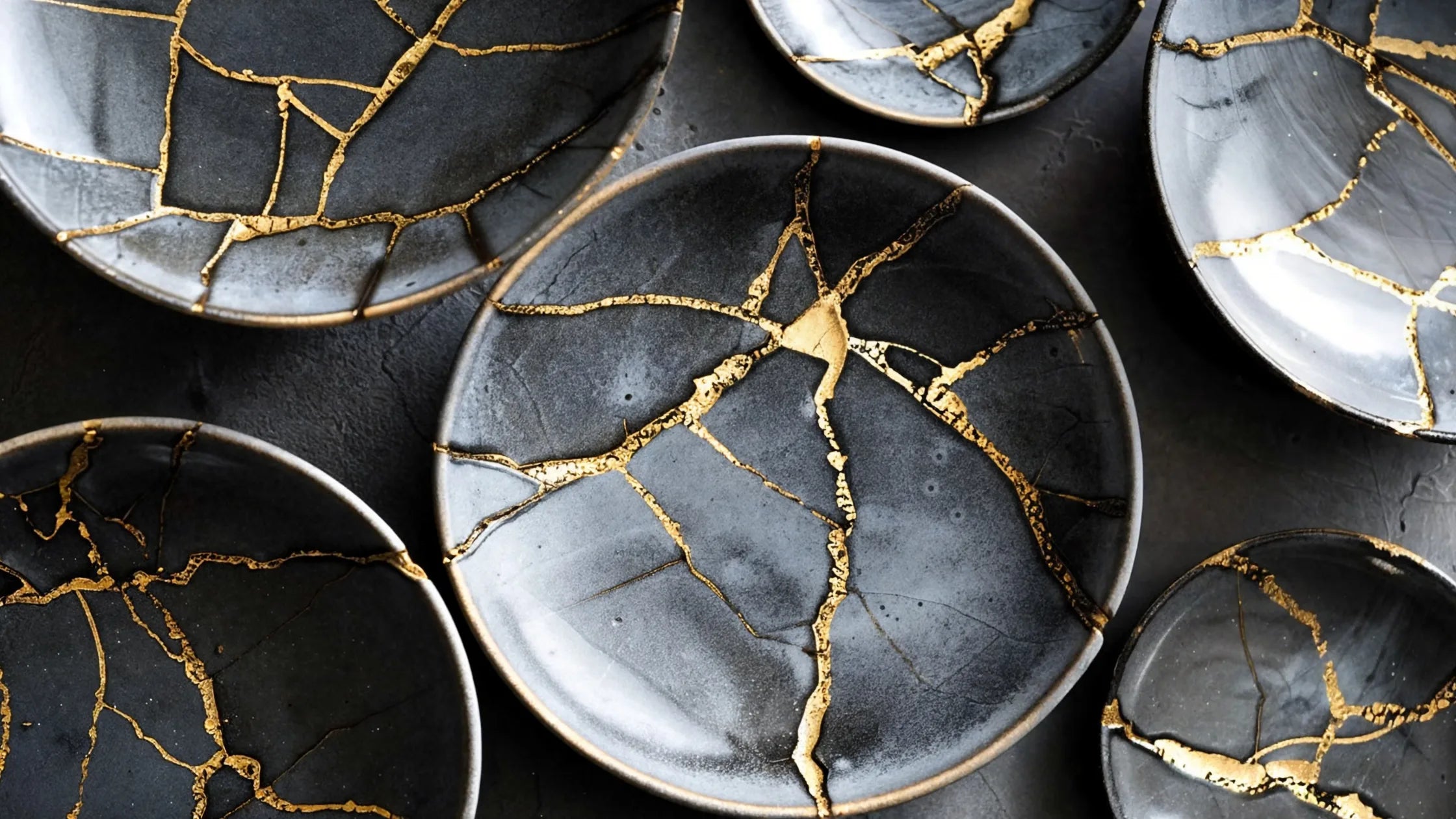Let’s be honest—we’re all a little obsessed with perfection. We toss out chipped mugs, replace scratched furniture, and scroll past anything that looks even slightly worn. But what if there was a better way to see broken things? What if instead of hiding flaws, we celebrated them?
That’s exactly what the Japanese art of Kintsugi is all about.
Kintsugi, which means “golden joinery,” is a way of repairing broken ceramics by filling the cracks with gold lacquer. Yes, you read that right—gold. Instead of gluing something back together and pretending it was never damaged, Kintsugi makes the cracks the most beautiful part of the whole thing.
But here’s the cool part: it’s not just about fixing bowls. It’s also a really powerful way of thinking about life, imperfection, and how we deal with things when they fall apart.
So, What Is Kintsugi?
Kintsugi is a traditional Japanese art form that dates back hundreds of years. The story goes that a shogun broke his favorite tea bowl and sent it off to China to get fixed. It came back stapled together with metal pins—and he wasn’t thrilled. So Japanese artisans came up with a better idea: use natural lacquer and sprinkle it with gold powder to repair the cracks.
That turned into a whole new aesthetic, inspired by wabi-sabi—a Japanese philosophy that finds beauty in things that are imperfect, aged, and even a little rough around the edges.

Why Gold? Isn’t That Kind of Extra?
At first, it might seem like using gold to fix a broken bowl is a bit over the top. But it’s actually really meaningful.
The idea is that when something’s been through a lot—when it’s broken and put back together—it’s not just “good as new.” It’s better. Those golden cracks tell a story. They show that the object didn’t just survive; it transformed.
And honestly, it’s kind of poetic. Because isn’t that true for people, too?

How Does Kintsugi Actually Work?
Traditional Kintsugi is a pretty slow, detailed process, and it takes patience. Here's a quick rundown of how it’s usually done:
-
Clean up the broken pieces. Make sure there’s no dust or grime.
-
Stick them back together using a special natural lacquer (called urushi).
-
Highlight the cracks by sprinkling powdered gold (or sometimes silver or platinum) over the seams.
-
Let it cure, polish it up, and boom—your once-broken bowl is now a one-of-a-kind piece of art.
There are also modern Kintsugi kits you can buy online that use resin instead of traditional lacquer. They’re easier to use if you’re just looking for a fun DIY project and still capture the spirit of the original technique.

Kintsugi Is More Than Just an Art Project
Sure, Kintsugi makes broken pottery look amazing—but it also teaches us something deeper. It flips the idea of perfection on its head. Instead of hiding the damage, it says, “Yeah, this broke. And that’s okay. In fact, let’s make it shine.”
That’s a pretty awesome way to look at life.
We all go through stuff. We all have our “cracks”—whether it's heartbreak, failure, or just getting knocked around by life. Kintsugi reminds us that we don’t have to erase those things. We can embrace them. Our scars don’t make us less valuable—they tell our story.

Why Kintsugi Feels So Relevant Right Now
Let’s face it: we live in a throwaway culture. If something breaks, we replace it. If something’s not perfect, we hide it. But more and more people are craving something deeper—something slower, more meaningful.
That’s why Kintsugi is showing up everywhere lately. You’ll see it in fashion, interior design, mental health, and even therapy. People are using it as a symbol of healing, resilience, and authenticity.
There are books, workshops, and tons of DIY kits out there, all inspired by this simple yet powerful idea: what’s broken can still be beautiful.

How to Bring a Little Kintsugi Into Your Life
You don’t have to start gold-lining your cereal bowls (though that could be fun). The real beauty of Kintsugi is in the mindset it brings. Here are a few ways you can apply it in your everyday life:
-
Fix things instead of tossing them. A chipped mug or cracked plate doesn’t need to go in the trash. Try repairing it—even if it’s just with glue or a paint pen.
-
Own your scars. Whatever you’ve been through, it’s part of your story. You don’t have to hide it.
-
Let go of perfection. Life is messy. Things break. It’s okay.
-
Slow down. Kintsugi is all about patience. Whether it’s in your schedule or your self-growth, give things time.
Final Thoughts
Kintsugi isn’t just about fixing pottery—it’s about shifting how we see ourselves and the world around us.
Instead of tossing out what’s broken or trying to make it look untouched, Kintsugi invites us to embrace the cracks. To see the damage not as a flaw, but as a feature. To turn the mess into something meaningful.
So whether you’re mending a teacup or putting your heart back together, remember this: the gold doesn’t hide the cracks—it highlights them. And maybe, just maybe, that’s what makes them beautiful.




Share:
5 Japanese Bedding Essentials for Better Sleep
Minimalist Storage Solutions Inspired by Japanese Design